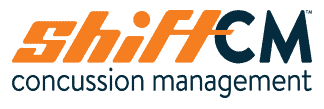One of the main symptoms people seem to struggle with after sustaining a concussion is ‘neurofatigue’. That feeling you get when even after a good night’s sleep you can’t seem to muster up the energy to tackle the day like you used to. Some days even the simplest of tasks seem overwhelming and can leave you feeling drained.
Neurofatigue is one of the most common complaints in people with persistent concussion symptoms. Your brain will seem to have less energy. Even after a little effort, you may feel worn out and unable to go on. Your brain is telling you that you need a rest and you might be wondering why?
Sure, at first being tired is expected, and it makes sense! In the acute stage of concussion, the initial energy deficit in the brain causes us to feel tired and more sleepy than usual, we know this.
But it’s when this fatigue persists beyond the initial couple of weeks, or even months, that we start to wonder… why am I still so tired? Well, there may be a reason for this fatigue and it has to do with how our brain operates within two important networks.
There are two main “brain networks” that work opposite one another. The first default mode network, or the “ego”. It is essentially our “self-talk” – the random thoughts we have throughout the day when we aren’t actively engaged in a task. It’s our little voice. It allows us to think about past events or speculate about future events. It’s that part of us that keeps us “in our own heads”.
The other is called is the executive network. This is what kicks in when we are focusing on the task at hand. We are dialled in and we are engaged in completing the job. Think – doing a test, or giving a presentation.
When we activate the executive network (our task-oriented network), our default mode network (the background self-talk) shuts down; or at least it’s supposed to. Similar to the autonomic nervous system and sympathetic and parasympathetic branch or more commonly, the fight or flight response.
Researchers have found that some people with persistent concussion symptoms fail to shut down their default mode network when performing a task. Functional MRI images of these people show that both networks (executive and default) are active at the same time; a problem termed Default Mode Interference. Because, as we spoke about before, this should be opterating like an on/ off switch!
Essentially, the Default Mode creeps up when you’re trying to concentrate and perform a specific task. This can lead to distraction, inattentiveness, and ultimately poor performance. And when both networks are active at the same time, it burns twice the energy! Ultimately, you burn more energy with fairly minimal amounts of cognitive activity, also known as, you guessed it… neurofatigue.
Default Mode Interference is not only limited to people with concussions. It has also been found in patients struggling with chronic pain, post-traumatic stress disorder (PTSD), generalized anxiety disorder and depression.
The good news is that psychological interventions, such as cognitive behavioural therapy (CBT), as well as individual strategies such as mindfulness-based meditation, can be effective in teaching strategies to effectively shut down the default mode network and improve task performance.
By quieting the inner voice and the distraction that comes with it, you are better able to focus your effort without exhausting yourself in the process.


Leave a Reply